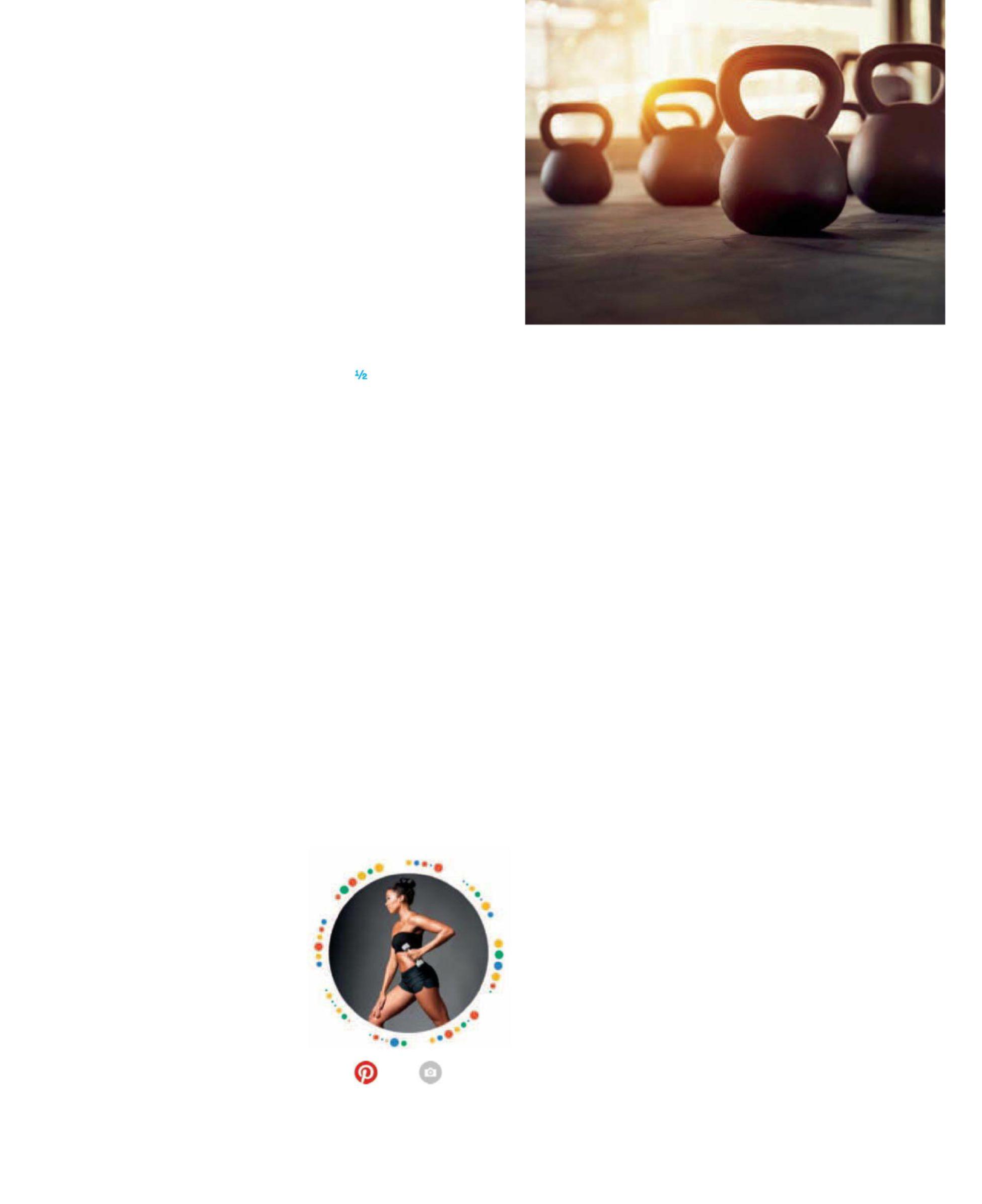
10 minute read
How four families turn acts of kindness into group adventures
WORK, MONEY, AND HEALTH ADVICE FOR BUSY PEOPLE
Looking Forward
Advertisement
YOUR PEACE OF MIND PLAN
By Kate Rockwood
Thevast majority of people think life insurance is a smart money move— yet only 59 percent say they have coverage. How to go fromwell intentionedto wellprotected? These tips from experts make the process a little easier to navigate.
The good news: Onceyou have a life insurance policy, you could be hands-off for decades.
1
Presspauseonyour assumptions.
With life insurance, sometimes the hardest part is getting started. “Research shows that many people think theywon’t qualify orwon’t be able to afford it, but that’s generally not true,” says James Scanlon, senior research director at LIMRA, an insurance research association in Windsor, Connecticut. In one survey, 86 percent of respondents said they hadn’t bought life insurance because itwas too expensive—but many overestimated the premiums by more than triple.The good news: Once you have a life insurance policy— unlike health insurance,whichyou might have to dealwith everyyear— you could be hands-off for decades.
2
Crunchthenumbers.

Think of the policy’s death benefit as a stand-in foryour earning power: Ifyou die,your loved oneswill need enough to replaceyour income at least until they can make other financial adjustments. Beforeyou talk to an agent about how much insurance to buy, run the numbersyourself. Sites like Bankrate.com and Lifehappens .org (an education group formed by insurance-industry organizations) offer online calculators thatwill estimate how much insuranceyou’ll need to cover any immediate expenses associatedwithyour death and minimize the financial impact on your family. comparing policies can really pay off. Because every insurer uses its own underwriting standards to assess risk, one might seeyour skydiving habit or type 1 diabetes diagnosis as a costly red flag,while another barely bumps the premiums. Interview at least two agents, suggests Marvin Feldman, president and CEO of LifeHappens .org. Get referrals from friends or online agent locators.Ask:What are their specialties? How many carriers do theyworkwith?Are they a captive agent (meaning theyworkwith one carrier and can’t recommend other companies’ products)?
3
Pickatypeofpolicy.
There are two main kinds.Term life insurance coversyou for a defined period, say 20 or 30years, and is usually less expensive.Whole life insurance coversyou for life and has an investment component. “Whole life can be away to save for retirement or save for education, but for many people there are betterways of doing that, like fundingyour IRA or 529,” says Benjamin Sullivan, a certified financial planner at Palisades Hudson Financial GroupinAustin, Texas. There’sno right answer for every situation, adds Scanlon, but term policies are simple and provide the most coverage per premium dollar. Life insurance offered as a benefit throughyour employer is nice, but it’s not enough. Some policies are so meager that the death benefitwouldn’t carryyour family through thecalendar year.Andwhen you switch jobs,you can’t take the policy withyou.Think of this insurance as a free supplement to the real coverage you’llbuy yourself.
4
Findanagent…
You’ll pay the same amount for a particular policywhetheryou shop directly with an insurance carrier or through an independent insurance agent in the U.S., says Michael Quinn, an independent agent in Orlando, Florida, and owner of Lifeinsuranceblog.net. But
5
…orgoitaloneonline.
Sites like Ladder, HavenLife, Fabric, andTruStage can make buying easier. “Instead of filling out a giant stack of forms, taking a medical exam, and thenwaiting three months to hear if you’re approved,you might know within aweek or much sooner,” says Feldman.They can act fast because they rely on simplified underwriting and algorithms. But know that, as Sullivan notes, “ifyou’re a healthy individual, going through full underwriting can mean lower premiums,which might beworth the hassle.” Onceyou have a plan, paying premiums annually may getyou the cheapest rate. And tell the beneficiary!You’ll give them peace of mind now—and spare them from tracking down (or even overlooking) the policy in the future.

Making It Work
How doyou talk toyour kids about what youdo?
By Jane Porter
“I have two girls who are 3 and 6. I think it’s important for my kids to see me in action as much as possible. If I’m curating a dinner menu for a group or speaking on a panel with other chefs at an event, I like them to be a part of it. Also, because of the flexibility of my schedule, I take on a lot of the domestic duties, since my wife works a more traditional schedule. Domestic work is important, and so often the burden falls on women, so I think it’s good for them to see me pitching in and doing my part.” “I used to work in the fashion industry, but after giving birth to my first son, I made the decision to stay home fulltime and continued to do so after my youngest was born. I recently returned to school to pursue interior design, and it has started a good conversation with my sons about work ethic. When they want to play with me, I tell them that when I have responsibilities for school, those have to come first. It’s a wonderful thing for them to see me working through school and making these types of choices.” “We launched our company 12 years ago, when I had three small children and was pregnant with my fourth. We often talk about work, among other things, at the dinner table, and because of this they’ve learned a lot about what it means to run a business. When we’d go to the grocery store, I would make sure my product was facing the right way on shelves; the kids picked up on that and now do the same. They’ve seen me lead a company while also maintaining a home life, and I think that’s key.” “I have twin boys who are 5 years old. I work for an organization that makes drugs for neglected diseases and helps sick children; I don’t go into the details of my work, because it would make them worried and upset, but I do share the international aspect of it with them. They love to FaceTime with me from interesting places, like Sudan, India, and the Congo. When I travel, we circle the set of days I’ll be gone on a calendar, and I’ll draw a picture of where I’m going. They can black out each box as the day goes by.” “When my 19-year-old son was younger, I would bring him into the NASA facilities, and we would talk about how important it is for us to know about the air we breathe and how we watch the storms that are coming so we’re able to give people enough notice to evacuate before a hurricane. Open lines of communication really start with those day-to-day conversations about work and what you do. I think that sets the stage for kids to be open about their own lives.”

BRYANT TERRY, 42, CHEF AND AUTHOR KELLI GELLER, 39, INTERIOR DESIGN STUDENT AND STAY-AT-HOME MOM KARA GOLDIN, 50, FOUNDER AND CEO OF HINT, A BEVERAGE AND PERSONAL-CARE PRODUCTS COMPANY ILAN MOSS, 42, SENIOR MANAGER AT DRUGS FOR NEGLECTED DISEASES INITIATIVE CHRISTYL JOHNSON, 50, NASA DEPUTY DIRECTOR FOR TECHNOLOGY AND RESEARCH INVESTMENTS


Exercise for Haters RUNNING
LOATHE RUNNING? FEAR THE WEIGHT
ROOM? ROLL YOUR EYES AT GROUP
FITNESS? READ ON, FRIEND: WE HAVE MIND-CHANGING ADVICE FROM
WOMEN WHO HAVE BEEN
THERE, LEARNED TO LOVE THAT.
By Sam Zabell Back inmiddleschool,Iwasrepeatedly told that I “run like a duck.” What’s more, I tired far too quickly onruns,wasslowerthanallmy friends, and got distracted and bored in no time. Clearly, runningwasn’t for me.
As I got older, I started taking workout classes and found Iwas keen on thosewith clear instructions and technical elements to hold my focus, likeyoga. I’d found my fit. But then I moved to NewYork City,where group classes are expensive. Running, on the other hand, is free.
To stay in shape (and on budget), IknewI’dhaveto hitthepavement, so I consulted Hannah Fields, an elite runner and expertwith Brooks BeastsTrack Club in Seattle. She claimed to have once hated running, likeme. Fieldstaughtmethatone helpfulwayto overcome the hangups, aches, and monotony that can comewith running is to learn mindfulness. “Take in all the sensory elements aroundyou: the treesyou pass, the breath going throughyour lungs, the sounds passing by,” she explained. This way,you’renotso
fixated on looking perfect or finishing. Her second tip: Find a running buddy—preferably onewith good formyou cancopy—tomakeruns more entertaining and helpkeepyou accountable.
I began joining a friend on her daily morning run, a two-mile loop in the park.Shewasonday88ofwhatis, to date, a 322-days-in-a-row personal running challenge, and she agreed to slow her pace so I could join her. Eight months later, things have clicked for me—she and I are running at least four times aweek, andwe’ve shaved almost a minute off our original time. An extra perk: Since she’s in coding school and Iwork full-time, it’s the only chancewe have to catch up.
When she told me shewas signing up for a race, I felt motivated to do the same; I’d come this farwith her help. Happily, my type-A personality respondedwell to concrete goals— race dates, mileage to hit, a pace to strive for. Since then, I’ve passed three half-marathon finish lines.
Do I love running now? Most days. Sure,Ihave timeswhenmylegsfeel heavy and I’d rather bail. But months of practice have made my stride less imperfect, I have recurring dates on the calendarwith a close friend to look forward to, and I’ve learned how to turn runs into mindful moments, my time to escape. I’m miles fromwhere I started.

YOUR FIRST THOUGHT: “I can’t even comfortably run a mile. I don’t know where to start.” RETHINK IT: Startslowly, literally and figuratively. Walk-run a mile and work your way up to longer distances as you build your cardiovascular strength and endurance. Small doses of running— even 1 to 3 miles, twice a week—pack maximum health benefits, says Carl J. Lavie, MD, medical director of cardiac rehabilitation and prevention at the Ochsner Medical Center in New Orleans.
YOUR FIRST THOUGHT: “Running is just so boring.” RETHINK IT: If you can’t run with a friend, run to a juicy podcast. There’s nothing like a true-crime murder mystery to distract you from the five-mile slump.
YOUR FIRST THOUGHT: “Miles feel impossibly long.”
RETHINK IT: Measure distance in a different way. Maybe you can do one mile in three songs.
and tap Open for ideas. STRENGTH TRAINING
By Liz Steelman
I can’t do a push-up.And until recently, Iwas too afraid to brave theweight room for fear of being judged for how weak I am. I also felt clueless about where to start. So instead I stuckwith cardio—like running or using the elliptical machine—because it had a clear directive and a repetitive movement that’s hard to mess up in any drasticway.
It’s not that I lacked an understanding ofthebenefits ofstrength trainingorthatIdidn’tcravethose things. I know it raises lean muscle mass and helps keep body fat in check,which not only keepsyou looking good but also reducesyour risks of things like heart disease and diabetes. Sowhen my editor challenged me to turn strength-training hatred into love, I had my “It’s now or never” moment.
I figured the onlyway to get comfortablewould be to address my fear head-on, through private training. I scheduled three one-hour sessions with Rebecca Kennedy, a personal trainer at SoHo Strength Lab, and two one-on-oneswith Don Saladino, celebritytrainerandownerofDrive 495 gym in NewYork City.
YOUR FIRST THOUGHT: “I don’t want to swap my sacred yoga time for strength training.”
RETHINK IT: You can do the bare minimum— even 10 minutes a day— and still see results, says Saladino.
YOUR FIRST THOUGHT: “Reps feel…repetitive.”
RETHINK IT: Disguise exercise as something else you love. For instance, if dance cardio is your thing, imagine that side steps with resistance bands are a dance move.
YOUR FIRST THOUGHT: “I just waste time doing random moves.”
RETHINK IT: Follow a strength workout on an app that provides videos or visuals of the exercises, like the Fitner app ($10 monthly Apple iOS app subscription).










